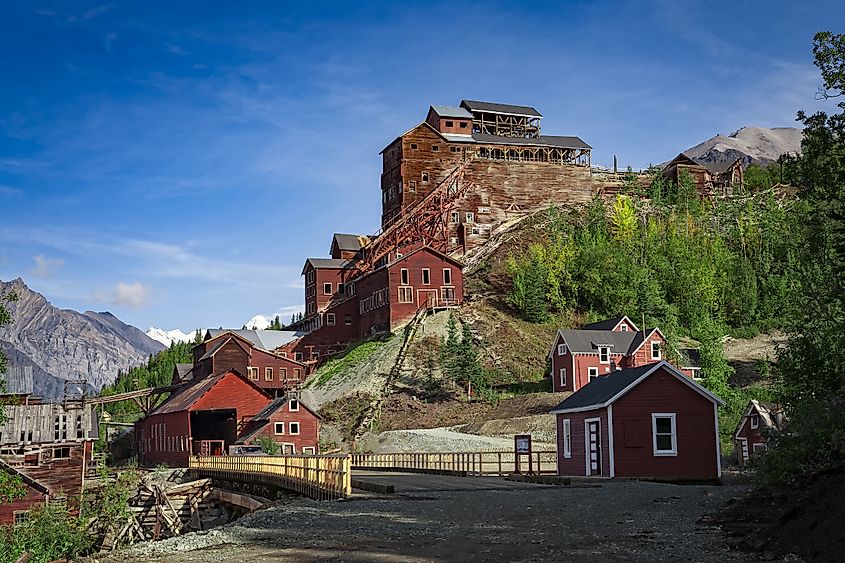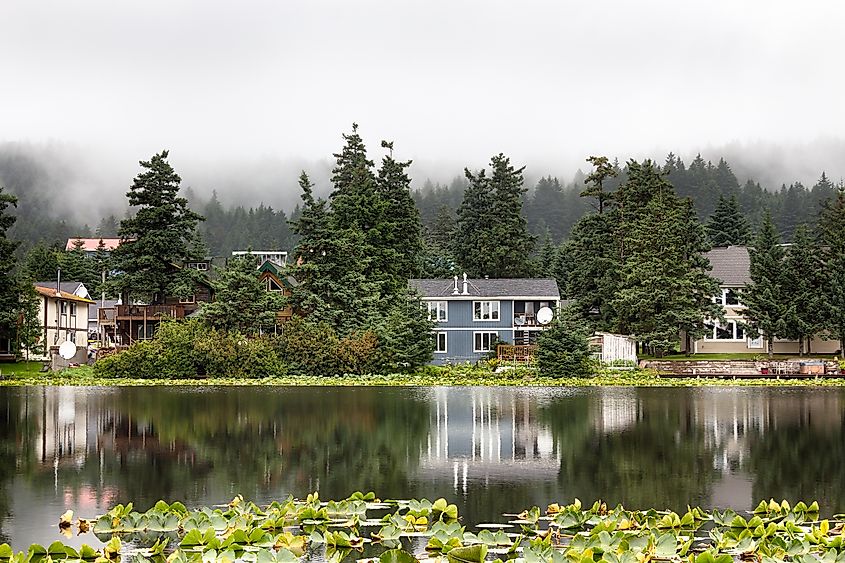
8 Towns In Alaska That Were Frozen In Time
Alaska's history stands apart from other states, shaped by its remote location, frigid climate, and unique cultural heritage. Long overlooked by the U.S., the territory came into focus in 1867 with the $7.2 million purchase from Russia—a deal so extraordinary it’s often compared to the price of a modern Hollywood mansion. Before and after this historic acquisition, Alaska's story is palpable in far-flung towns like Unalaska, Ketchikan, and Utqiagvik, where fossils, totems, and fortifications are preserved not only by historians but also by nature’s frozen touch. Discover eight Alaskan towns that feel frozen in time, both literally and figuratively.
Unalaska

A hub on the Aleutian Islands, the westernmost land in the entire United States, Unalaska preserves about 4,200 living souls and countless fallen souls from stormy eras. Native Unangans were conquered by Russians, who were then conquered by Americans. Later, the Japanese failed to conquer these Americans in Alaska. Unangan relics like bones and tools are stored at the Museum of the Aleutians; Russian heritage is on lavish display at the red-shingled, green-domed Holy Ascension Russian Orthodox Church, which is among the oldest churches in Alaska; and traces of America-Japan conflict are prevalent since Unalaska is one of few U.S. locales attacked by Japan during WWII. Furthermore, Memorial Park honors deceased soldiers with dignified monuments, while the Aleutian World War II National Historic Area exhibits the ruins of bunkers, lookouts, and gun mounts.
Ruby

An off-the-grid town on the Yukon River, Ruby operates like a traditional fishing village. Many of its residents are Koyukon Athabascans, who catch salmon, hunt moose, and gather berries in the subsistence fashion of their ancestors. Certain tourists make the long journey (either by boat, snowmobile, or small plane) to relish remote Ruby. Most stay at the Empty Nest Bed & Breakfast, sampling fresh-caught salmon and fresh-picked berries, meeting local artisans, and purchasing birch snowshoes and ivory carvings. Of course, they also explore nature for themselves. Ruby straddles the Nowitna National Wildlife Refuge, a 2-million-acre preserve of riverside terrain. It is also a checkpoint on the Iditarod, a 1,000ish-mile dogsled race from Anchorage to Nome along traditional mushing routes. Yes, dogsledding is another way to access Ruby, but it's not one for the faint of heart.
Sitka

A booming metropolis by Alaskan standards, Sitka has around 8,500 residents, making it the fifth-most populous community in the state. Like Unalaska, it was first populated by Indigenous people, then Russians, and then Americans after the 1867 Alaska Purchase. One can see remnants of the first two upheavals at Sitka National Historical Park, the site of the 1804 Battle of Sitka between Russians and Native Tlingits. In addition to battle-era artifacts, the park preserves Tlingit and Haida totem poles as well as the Russian Bishop’s House, which, having been built in 1842, is one of Alaska's oldest surviving structures. Later upheavals are palpable on Japonski Island. During WWII, it was a fort spread across neighboring islands by a causeway. Those military ruins are now accessible by boat.
Ketchikan

Ketchikan is another booming metropolis that houses over 8,000 people on Revillagigedo Island in southeastern Alaska. Because it's the closest Alaskan hub to southern Canada and the Lower 48, Ketchikan is called "Alaska's First City." Appropriately, many of its first buildings lie in the Downtown Ketchikan Historic District, Stedman-Thomas Historic District, and Creek Street Historic District. The last of those comprises ornate structures lining a stilt-suspended boardwalk that once centered a red-light district. The Dolly’s House Museum and the Potlatch Totem Park and Museum are notable landmarks that transport visitors to the past. Other colorful artifacts can be found at the Totem Heritage Center, Totem Bight State Historical Park, and Saxman Totem Park in nearby Saxman, which supposedly combine for the world's largest collection of totem poles.
Utqiagvik

On the opposite side of Alaska from Ketchikan, within the Arctic Circle, sits Utqiagvik, the northernmost community in America. It was named "Barrow" after British sailors arrived in the 19th century, but for a thousand years prior, it was an Inuit hunting and gathering ground with Inuit names. Learn more about its history at the Inupiat Heritage Center, see a bare-bones example of Inuit game at the Utqiagvik Whale Bone Arch, and explore a tundra virtually unchanged for millennia via 71 North Tours, LLC or Tundra Tours, Inc. In 2016, Barrow reverted back to an Inuit name, so you can't escape Utqiagvik's past even in reference.
Wrangell

Wrangle all the relics in Wrangell, one of the oldest Native and non-Native settlements in Alaska. Start with the Petroglyph Beach State Historic Site, which is said to have the highest concentration of petroglyphs in southeastern Alaska. Its 40-some etchings are roughly 8,000 years old. From the beach, wander to Wrangell Museum, which displays additional Tlingit artifacts alongside nuggets of gold rush history. Finally, sail with Alaska Charters and Adventures to follow a veritable United Nations worth of explorers. Wrangell is the only Alaskan city ruled by four nations: Tlingit, Russia, Great Britain, and the United States.
Kodiak

Kodiak bears its past for all to explore. This Kodiak Island community was settled by the Alutiiq before becoming the first capital of Russian Alaska and later an American fishing hub. Today, its Alutiiq Museum and Kodiak History Museum take guests through this history, spanning 7,500 years of human habitation. The latter does so in the Russian-American Magazin, built circa 1808 as a Russian store and considered one of the oldest buildings in Alaska. Visitors can survey even older history in the Kodiak National Wildlife Refuge, whose giant bruins have come to represent Kodiak more than anything else. After all, bears were there long before Americans, Russians, and Alutiiqs.
Skagway

Now home to just over 1,000 people, Skagway became the largest city in Alaska when tens of thousands of prospectors scrambled to its shores during the Klondike Gold Rush. Skagway was a gateway for golden dreams, most of which became nightmares as people and pack animals faced hardships along the White Pass Trail. That trail and others to real and imagined riches are accessible in the Klondike Gold Rush National Historical Park. Less perilous places are preserved in the Skagway Historic District. They include the Mascot Saloon, which was built for rowdy miners circa 1898 and restored by reserved architects circa 1990, and Lynch and Kennedy, which began as army barracks in 1900 and is now a gallery/store with art made from gold nuggets and fossilized mammoth tusks.
Wrapping Up A Frozen Adventure
The uniqueness of Alaska's history is matched by its geography, whose remote islands and frozen tundra help preserve the past in scenic symbiosis. As such, the towns carved into Alaskan rock and ice are time capsules for megafaunal roaming, Inuit fishing, Russian colonizing, American prospecting, Japanese skirmishes, and everything in between. Visit Unalaska, Ruby, Sitka, Ketchikan, Utqiagvik, Wrangell, Kodiak, and Skagway to peel back the permafrosted layers of Alaskan history.











